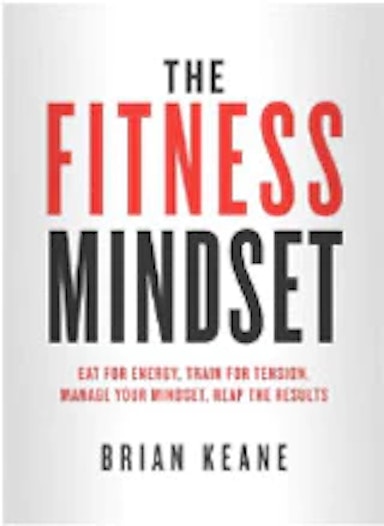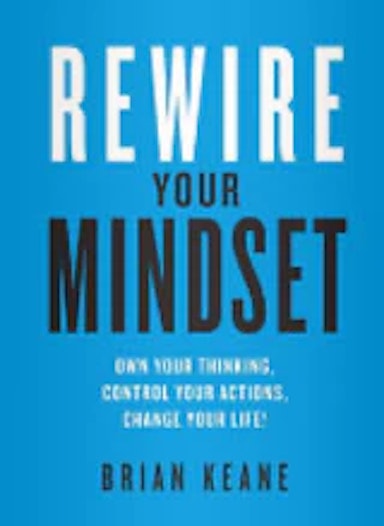Create Multiple Revenue Streams So You Never Get Stuck For Cash!
- By Brian Keane
There’s an old adage that you should ‘never put all your eggs in one basket’ and although I also prescribe to the ‘put all your eggs in one basket and watch the basket’ philosophy when it comes to some of my personal investments; when it comes to my business, I always opt for the former rather than the later.
Creating multiple revenue streams is exactly as it sounds – it means that you have several income sources coming in from many different directions. Some are overlapped; some serve a different audience or purpose and others are stand alone so that you do the work once and then get paid for it forever; for example monthly or bi annual book royalty payments i.e. the amount of money you receive for every book that you’ve written that’s ever been sold.
When I was working full time as a personal trainer, I was sick and tired of having the revenue peaks and valleys that come with being a 1:1 personal trainer. The New Year would be crazy busy and I’d be booked solid for three months and then April would come and it would get quiet again, then the summer rush would come for May and June and die down again inJuly and August when people go on holidays. Then September to November would be steady before a huge drop off for the Christmas period. That cycle seemed to repeat itself year after year. Then in 2015, I learnt about how to create multiple revenue streams.
I spoke in episode 3 of my business podcast ‘Some of the Stupid Taxes I Paid Over The Years’ about how I didn’t start attending seminar and conferences until 2015. That year, I attended a seminar that changed my life forever! Actually, the seminar wasn’t even about multiple revenue streams but one of the speakers mentioned it on stage and I had never heard of the term. I even had to Google it!
For me, I had come from the 9-5, Monday to Friday background so I always assumed, one job = one revenue stream. Wrong!
I spent the next month looking up everything I could on multiple revenue streams – I listened to podcasts on the topic, I read the 4 Hour Work Week by Tim Feerriss and I bought some online courses that thought me more about the subject.
After learning a little bit more, I started small. I went from 1:1 PT to 1:1 PT and weight loss classes. Then I went from 1:1 PT and weight loss classes to 1:1 PT, weight loss classes and online personal training until I built up several different streams of income that I use today.
Once I did this, it gave my entire business a more solid foundation. I was no longer a slave to ‘the quiet month’ or if I got sick and couldn’t work for a week or two, my end of month pay was never really affected. I actually have a full module on this at my business seminars because of the impact it had on my business. For me, it was the difference between ‘counting penny’s after Christmas’ or ‘putting money away for a rainy day’ to never worrying about my monthly revenue or adjusting my lifestyle because my income is consistent (or growing) month on month.
Now in 2019, my business is split into several different silos (fitness, GAA, business etc.) so a lot of my revenue streams are independent of one another. That’s by design as it reverse engineers how I like to work but you can do the same with your business.
The key is to understand that if you put all your eggs in one basket, if something happens to that basket, you’re going to be in trouble. Here is just some of the ways you can diversify your income by adding new revenue streams. There are loads of other ways but here are just some that I do or have done in the past.
1: One to one service
This is your straight forward 1:1 service. This should also be your highest ticket item too, i.e. the one the commands the highest price. The closer your clients are to you and the more intimate the experience or service, the cost needs to be a reflection on that.
2: Classes
Personally, this was my favourite ‘active’ way of earning when I was working 1:1 with people in fitness. Active income is the opposite of passive income. With passive income, you do the work once and then sit back and earn. Active income is trading time for money. It’s normally a lower price than 1:1 as you could have 10-30 people in a class; however the return or how much you make is normally significantly higher.
For example if you charge €30 an hour for 1:1 PT and €10 per person per class but the class has 10 people that’s €100 per hour, more than three times your 1:1 rate! This is a great model to scale if you get very clear on your marketing and how you can target your ‘perfect customer’.
3: Online
There are several options for this. I work with some personal trainers who also do a lot of work as influencers (they have 10k, 20k or 30k+ followers on social media) – in this case we normally design a scaled program i.e. a glute guide, bikini body or abs/fitness model program at a lower price point but sell it to more people.
For example, if you have a €20 program but sell 100 each month., that 2k a month recurring revenue. Its largely passive too as I normally get them to design the program as perfectly as possible off the bat, automate it and then spend their time, energy (and money if they’re using Facebook, Instagram or Google ads) to bring people into the top of that funnel and focus on the conversion.
The alternate is if you have a small online presence (1,000 followers or less), then it’s about creating bespoke programs, working more intimately with your clients and charging a higher price to reflect his. For example, you charge €100 a month but only have 20 online clients. That’s the same 2k a month as the influencer. Both models work, its just about finding what model works best for you.
4: Book royalties
“You write the book once, you get paid forever” – I heard this from a speaker at a seminar once and it has always stuck with me. On top of being a largely risk free/low entry point (books are rarely more than €20) and something that makes you money forever , a book can also enhance your reputation to justify higher speaking fees or work as your top of funnel entry point to a program upsell.
The people I work with, either in my full day business builder or my mastermind/mentorship programs who have a very specific niche or message they want to share with the world, this is nearly always a no brainer option.
5: Speaking fee
Go to an event, speak, get paid, and leave. It’s a pretty straightforward and easy one. The hard work is building the authority or putting in the groundwork to become a thought leader around a topic. Your social media content, writing books and creating podcasts are all great starting points for building the foundation for this.
6: Seminars
This isn’t completely dissimilar to the speaking fee above but you run it yourself and sell to your current audience. It normally has a lot more work, organising and marketing than just rocking up at an event to speak for an hour. However, its normally such much more rewarding. I’m still connected with a lot of people who have attended my seminars in the past and its an amazing way to connect with your tribe!
7: Affiliates
Some of my influencer friends earn upwards of 2-3k per month on their affiliate deals alone. For example if you’re sponsored by a supplement company, food service or clothing brand and use ‘code10’ at checkout, they receive 10% for every sale made through that link.
Personally, I don’t do much of this at the minute as its my least favourite of all the options mentioned but if you’re building a personal brand with a large following and want to get paid for promoting things you use already, it’s a great income source.
8: Sponsorships
Similar to affiliates but you have a ‘retainer’ or get a monthly wage (or annual once off payment in most cases) by a company and you become a brand ambassador for them.
Generally people think you need a huge following to get sponsored but that’s simply not the case. If you have a very specific niche that you serve (ultra endurance sports, first time mums, herbal tea connoisseurs etc.), even if you’re following is small, if they are engaged enough, you can get sponsored by a third party company that is trying to gain more influence in that market. Obviously the more followers or engagement you have means you get paid more but you could still earn a few thousand a year with a small audience if they’re active enough.
9: Products
physical products work great too – for example I have my BKF clothing line that sells through my website. Its independent from everything else and just started as an idea in late 2017, now it earns decently well every month through organic or paid traffic to my website. It helps that the material in my hoodies are the same as under armour so they last forever but that was more down to getting the distribution right from the beginning. Other products you could consider include supplements, yoga mats, shakers; basically anything that serves your particular market.
Conclusion:
I’ve mentioned 9 examples above but there are loads more; its just about knowing who your market is and how you can best serve them. After that, its just about merging the two with a business model that helps peoples in multiple ways.
This has came up quite a lot recently and I know it’s a very popular part of my business seminar so hopefully the blog post works as the catalyst for you to start designing multiple revenue streams for your business or if you’re already doing it, adds some even more ideas to it.


